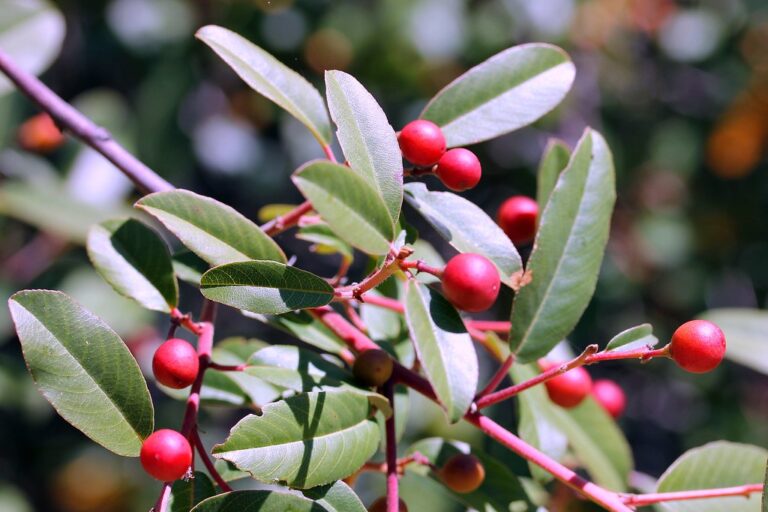11 Causes of Yellow or Brown Leaves on Norfolk Island Pines

Do you own a Norfolk Island pine? Whether it serves as your living Christmas tree or a long term houseplant, you probably want its foliage to stay evergreen and vibrant, right? But what do you do when you start noticing sad, yellow, or brown leaves on your plant?
It’s easy to assume that the discoloration is due to neglect and lack of water, but there are actually several reasons why the foliage of your Norfolk Island pine might be turning unsightly hues.
In this article, we’ll explore 11 possible causes of yellow or brown leaves on Norfolk Island pines. By understanding these different reasons for discoloration, you’ll be better equipped to choose the right solution to help your tree regain its green glory.
Are you ready to learn how to care for your Norfolk Island pine and bring it back to life? Let’s dive into the list of potential causes of yellow or brown needles.
Causes of Discolored Foliage on Norfolk Pines
- Anthracnose
- Direct Sunlight
- Cold Temperatures or Drafts
- Hot Temperatures
- Low Humidity
-
Low Light
-
Natural Leaf Shedding
- Nutrient Deficiency
- Root Rot
- Spider Mites
- Underwatering
But before we explore each cause in detail, make sure you check out our complete guide to caring for Norfolk Island pines if you want to review their growing requirements.
1. Anthracnose
Although anthracnose is not the most common reason for brown leaves on Norfolk pines, it is a fungal disease caused by Colletotrichum derridis that can lead to discolored foliage and black specks on the leaves.
If you suspect anthracnose, remove infected foliage and dispose of it properly. You can also apply neem oil to prevent the spread of the fungus. Remember to avoid watering plants from overhead to prevent the development of the disease.
2. Direct Sunlight
While Norfolk pines can thrive outdoors under direct sunlight in their native environment, sudden exposure to full sun can cause brown leaves on indoor plants. Gradually introduce your plant to brighter, more direct light to avoid sun scorching.
Remember, bright, indirect light is sufficient for these trees and can even slow down their growth, which is beneficial for indoor gardening.
3. Cold Temperatures or Drafts
Exposure to cold temperatures below 50°F can lead to brown leaves on Norfolk Island pines. Check for cold drafts near windows, doors, or chimneys that may affect your plant. Maintain a temperature range of 60 to 72°F for optimal growth.
4. Hot Temperatures
Hot temperatures above 95°F can also cause brown leaves on Norfolk pines. Consider keeping your plant indoors all year round to prevent heat damage. Avoid placing your plant near fireplaces or heat sources that can raise the temperature to uncomfortable levels.
5. Low Humidity
Low humidity levels can result in brown needles on Norfolk Island pines, especially in dry winter months. Aim for a relative humidity of around 50%. Use a hygrometer to monitor indoor humidity levels and consider using a humidifier to raise moisture levels if needed.
6. Low Light
If you notice yellow branches and drooping foliage, your plant may not be receiving enough light. Provide bright, indirect light with some direct morning sunlight. Use a light meter to assess light exposure and consider moving your plant closer to a window or using a grow light if necessary.
7. Natural Leaf Shedding
Natural leaf shedding is a normal process for Norfolk Island pines, primarily affecting older branches. If the shedding is rapid or affects the top branches, it may indicate a different issue.
8. Nutrient Deficiency
Yellowing due to macronutrient deficiency can be corrected with a 3-1-2 (NPK) fertilizer, while yellowing at branch tips may indicate a micronutrient deficiency. Ensure your plant’s growing medium has a pH below 7.0 to prevent nutrient deficiencies.
Feed your plant with a fertilizer rich in micronutrients like Mission Organic Grow 3-1-2 Fertilizer.
9. Root Rot
Overwatering can lead to root rot, causing yellow or brown leaves on Norfolk Island pines. Ensure proper drainage, allow the growing medium to dry between waterings, and repot the plant if necessary to prevent root rot.
Use a well-draining growing medium like De La Tank’s House Plant Mix to promote healthy root growth.
10. Spider Mites
Spider mites can infest Norfolk Island pines, causing brown leaves with an orange tint. Use neem oil to control spider mites and prevent further damage. Reapply neem oil periodically until the pests are eradicated.
11. Underwatering
Underwatering is a common cause of brown needles on Norfolk Island pines. Maintain a proper watering routine by watering when the top inch of the growing medium is dry. Trim off brown branches and monitor the plant for new growth.
If you have addressed the underlying issues causing yellow or brown leaves on your Norfolk Island pine, you can prune unsightly branches and encourage new growth.
Remember to provide the best care for your plant to help it thrive. If you found this guide helpful, let us know in the comments. And if you need further assistance, consider exploring more resources on Norfolk Island pines:
- Tips for Watering Norfolk Island Pine Trees
- To Repot or Not: Why, When, and How to Repot Norfolk Island Pine Trees
- How to Propagate Norfolk Island Pine
By following these tips and caring for your Norfolk Island pine properly, you can enjoy a lush, evergreen plant for years to come.





